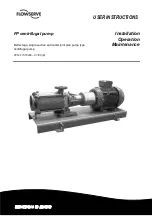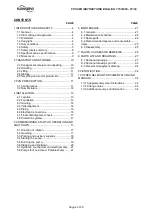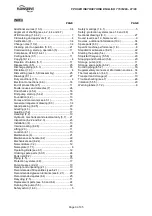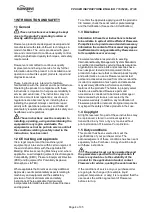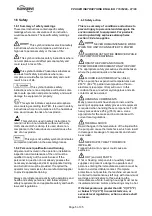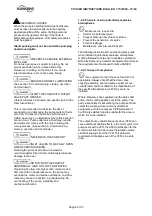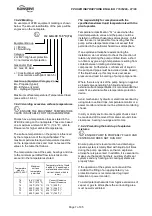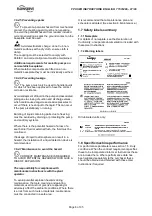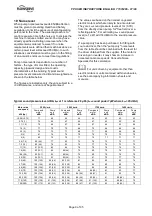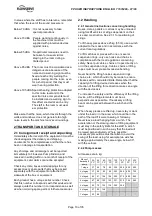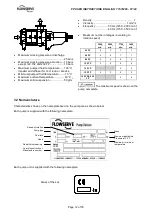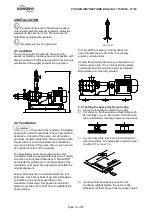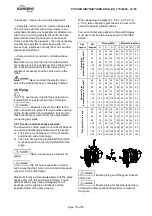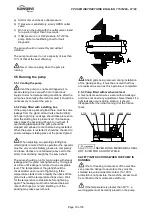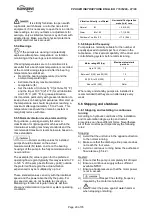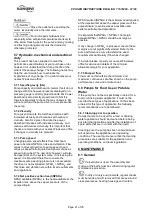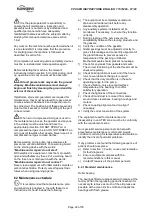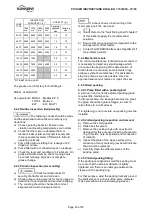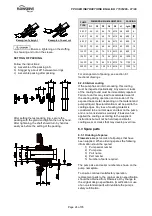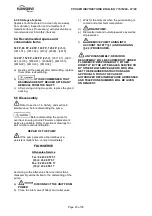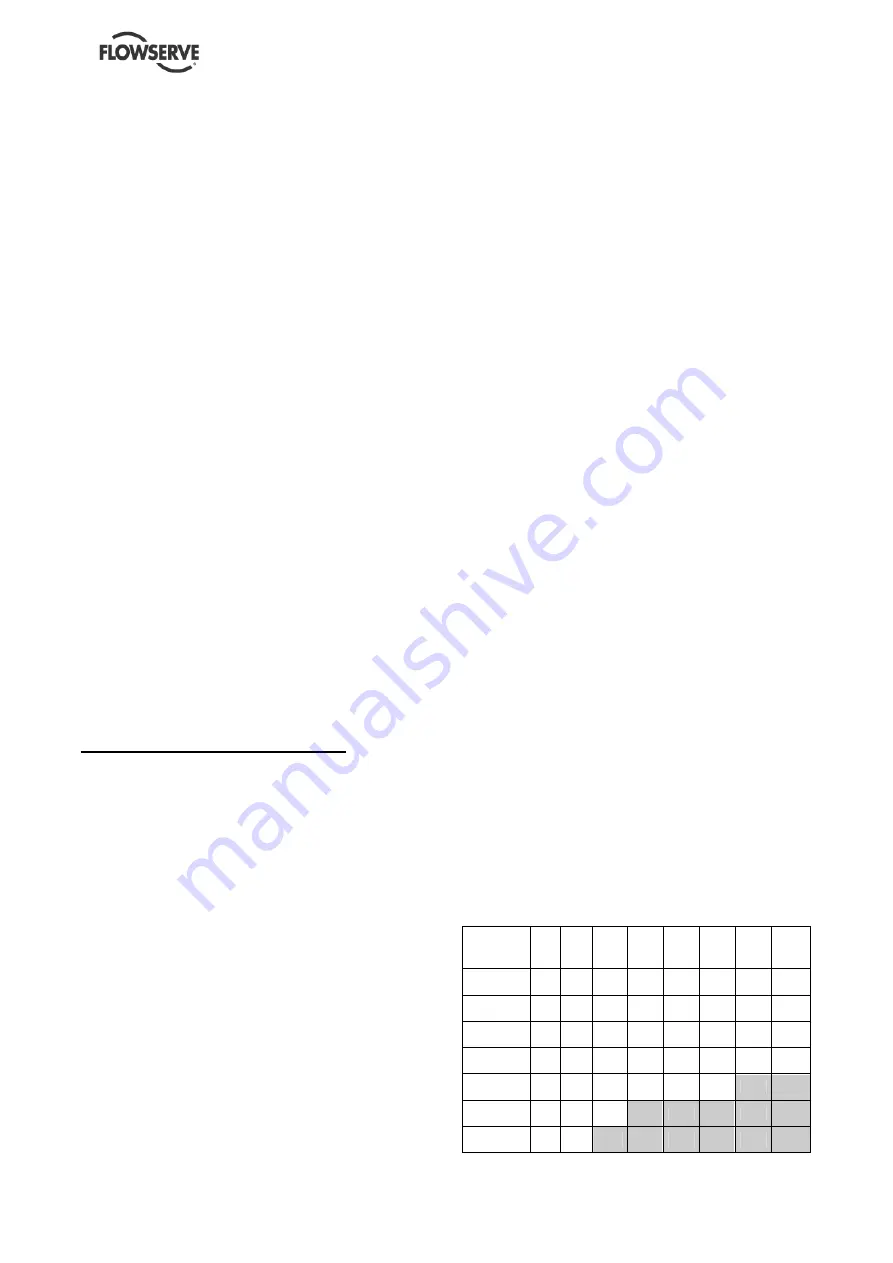
FP USER INSTRUCTIONS ENGLISH 71576286 - 07/06
Page 10 of 35
In areas where the staff has to intervene, remember
that when the level of the sound pressure is:
Below 70 dBA :It is not necessary to take
special precautions.
Above 70 dBA :People working continuously in
the machine room m ust be
supplied with protective devices
against noise.
Below 85 dBA :No particular measures need to
be taken for casual visitors
staying in the room during a
limited period.
Above 85 dBA :The room must be considered as a
dangerous area because of the
noise and a warning sign must be
fixed at each entry warning the
people coming into the room, even
for a short period, that they must
wear hearing protection.
Above 105 dBA:Special hearing protection adapted
to this noise level and to the
spectral noise components must
be installed and a warning sign to
this effect erected at each entry.
The staff in the room must wear
ear protection.
Make sure that the noise, which travels through the
walls and windows, does not generate too high
noise levels in the machine room's surroundings.
2 TRANSPORT AND STORAGE
2.1 Consignment receipt and unpacking
Immediately after receipt of the equipment it must be
checked against the delivery and shipping
documents for its completeness and that there has
been no damage in transportation.
Any shortage and or damage must be reported
immediately to Flowserve Pump Division and
received in writing within one month of receipt of the
equipment. Later claims cannot be accepted.
Check any crate, boxes and wrappings for any
accessories or spare parts that may be packed
separately with the equipment or attached to
sidewalls of the box or equipment.
Each product has a unique serial number. Check
that this number corresponds with that advised and
always quote this number in correspondence as well
as when ordering spare parts or further accessories.
2.2 Handling
2.2.1 General instructions concerning handling
Boxes, crates, pallets or cartons may be unloaded
using forklift vehicles or slings dependent on their
size and construction. See 2.3.1 for positioning of
slings.
To lift heavy pieces above 25 kg (55 lb), use a winch
adapted to the mass and in accordance with the
current local regulations.
To lift machines or pieces with one or several
suspension rings, only use hooks and chains in
compliance with the local regulations concerning
safety. Never put cables, chains or ropes directly on
or in the suspension rings. Cables, chains or lifting
ropes must never present excessive bending.
Never bend the lifting hooks, suspension rings,
chains, etc., which should only be made to endure
stresses within, calculated limits. Remember that the
capacity of a lifting device decreases when the
direction of the lifting force direction makes an angle
with the device axis.
To increase the safety and the efficiency of the lifting
device, all the lifting elements must be as
perpendicular as possible. If necessary a lifting
beam can be placed between the winch and the
load.
When heavy pieces are lifted up, never stay or work
under the load or in the area, which could be in the
path of the load if it were to swing or fall away.
Never leave a load hanging from a winch. The
acceleration or the slowing-down of lifting equipment
must stay in the safety limits for the staff. A winch
must be positioned in such a way that the load will
be raised perpendicularly. Where possible
necessary precautions must be taken to avoid the
swing of the load, using for example two winches
making approximately the same angle, below 30°,
with the vertical.
2.2.2 Pump masses
All masses are in kg:
Mass of
bareshaft
pump
50
FP
65
FP
80
FP
100
FP
122
FP
125
FP
152
FP
202
FP
1 stage
37
54
78
80
204
205
530
600
2 stages
37
54
92
94
243
240
605
720
3 stages
42
61
106
108
282
275
680
840
4 stages
47
68
120
122
321
310
755
960
5 stages
52
75
134
136
360
345
6 stages
57
82
148
7 stages
62
89

